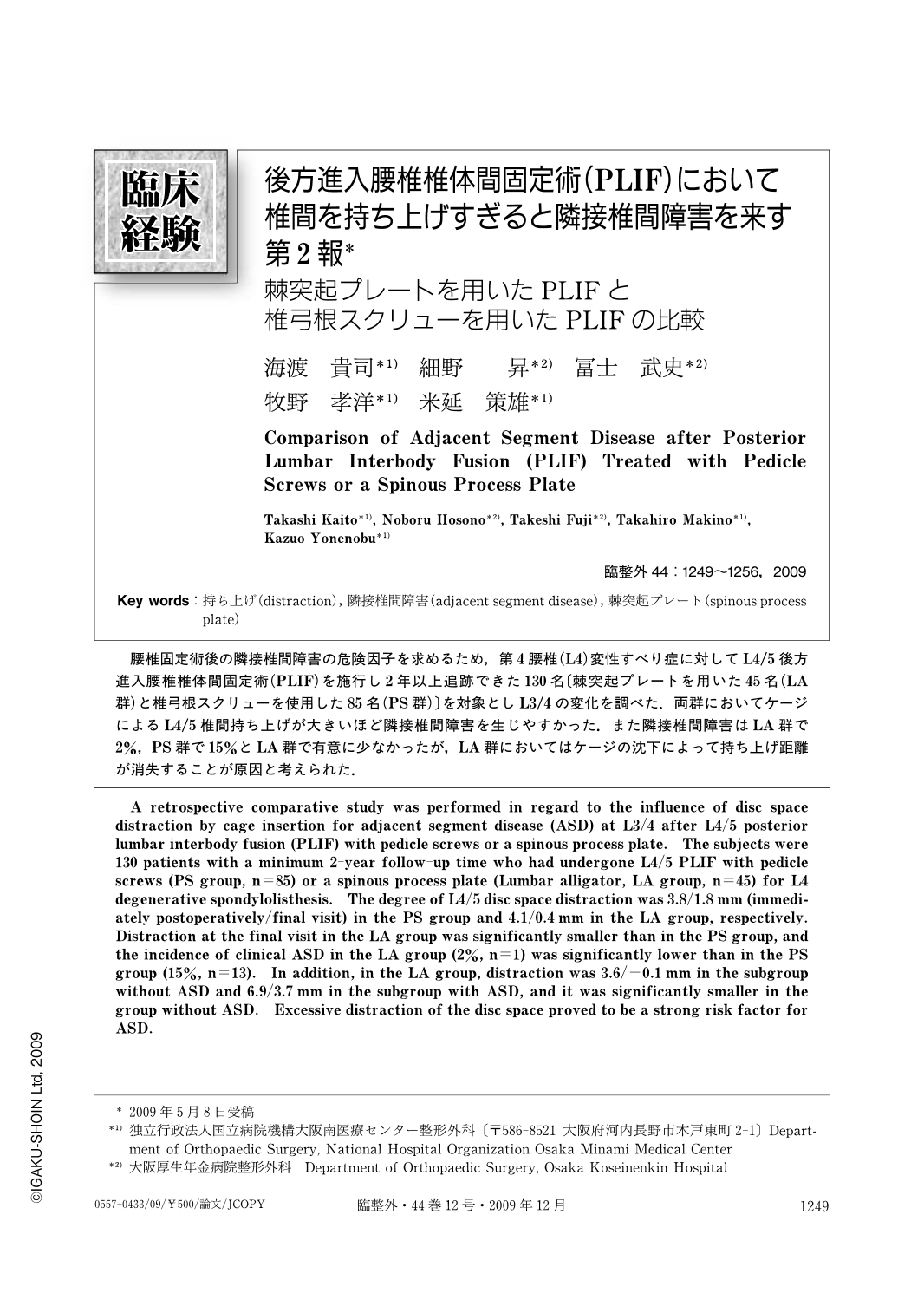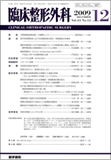Japanese
English
- 有料閲覧
- Abstract 文献概要
- 1ページ目 Look Inside
- 参考文献 Reference
腰椎固定術後の隣接椎間障害の危険因子を求めるため,第4腰椎(L4)変性すべり症に対してL4/5後方進入腰椎椎体間固定術(PLIF)を施行し2年以上追跡できた130名〔棘突起プレートを用いた45名(LA群)と椎弓根スクリューを使用した85名(PS群)〕を対象としL3/4の変化を調べた.両群においてケージによるL4/5椎間持ち上げが大きいほど隣接椎間障害を生じやすかった.また隣接椎間障害はLA群で2%,PS群で15%とLA群で有意に少なかったが,LA群においてはケージの沈下によって持ち上げ距離が消失することが原因と考えられた.
A retrospective comparative study was performed in regard to the influence of disc space distraction by cage insertion for adjacent segment disease (ASD) at L3/4 after L4/5 posterior lumbar interbody fusion (PLIF) with pedicle screws or a spinous process plate. The subjects were 130 patients with a minimum 2-year follow-up time who had undergone L4/5 PLIF with pedicle screws (PS group, n=85) or a spinous process plate (Lumbar alligator, LA group, n=45) for L4 degenerative spondylolisthesis. The degree of L4/5 disc space distraction was 3.8/1.8mm (immediately postoperatively/final visit) in the PS group and 4.1/0.4mm in the LA group, respectively. Distraction at the final visit in the LA group was significantly smaller than in the PS group, and the incidence of clinical ASD in the LA group (2%, n=1) was significantly lower than in the PS group (15%, n=13). In addition, in the LA group, distraction was 3.6/-0.1mm in the subgroup without ASD and 6.9/3.7mm in the subgroup with ASD, and it was significantly smaller in the group without ASD. Excessive distraction of the disc space proved to be a strong risk factor for ASD.

Copyright © 2009, Igaku-Shoin Ltd. All rights reserved.


